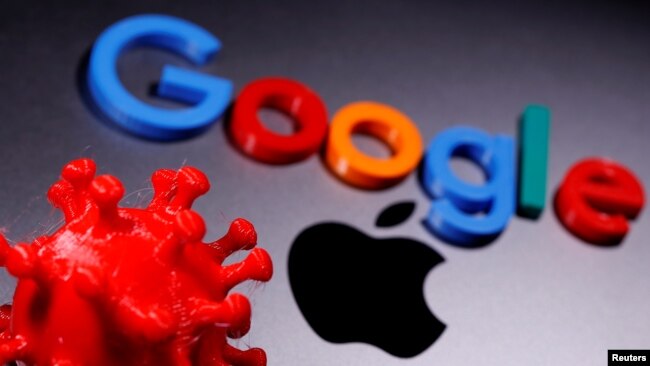2020を締めくくる記事をご紹介します。
今日のVOAは、新技術です。
早速、聴きましょう。
今年も英語学習で締めくくりましょう!!!
- COVID-19に対抗するために2020年に誕生した新技術
- CodeTheCurve hackathon challenge
- CodeTheCurve Hackathon - Teaser
- 4月6日に募集を開始し、4月15日に締め切り、4月20日にハッカソンの入選40チームを発表。4月22日、23日にオンライン学習、4月24日、25日、26日にバーチャルハッカソン活動が行われ、4月30日頃に入賞チームが発表されました。
- What’s CodeTheCurve?
- Who are the participants?
- Skills required
COVID-19に対抗するために2020年に誕生した新技術
New Technologies Created in 2020 to Fight COVID-19
1 hour ago /2020/12/31
COVID-19パンデミックは、2020年に世界中の多くの産業に影響を与えました。多くの企業は、新型コロナウイルスの世界的な蔓延に関連して深刻な経済的困難に直面しました。しかし、人々の生活を改善するために、病気と戦うための新技術を開発することができた企業もありました。
3Dプリントされた酸素バルブ
パンデミックに関連して最初に報告した企業の1つは、COVID-19の患者を治療するための酸素バルブを迅速に製造するための3Dプリンターを開発しました。
イタリアの新会社Isinnovaは、自社の3Dプリント装置を使って医療機器をコピーする方法を見つけました。バルブは、呼吸に問題がある患者に酸素を接続するために使用されます。同社は、多くのイタリアの病院がバルブの深刻な不足に直面していることを知った後、無料で救命装置を生産したのです。
‘Hackathon’ solutions ’ハッカソン’ソリューション
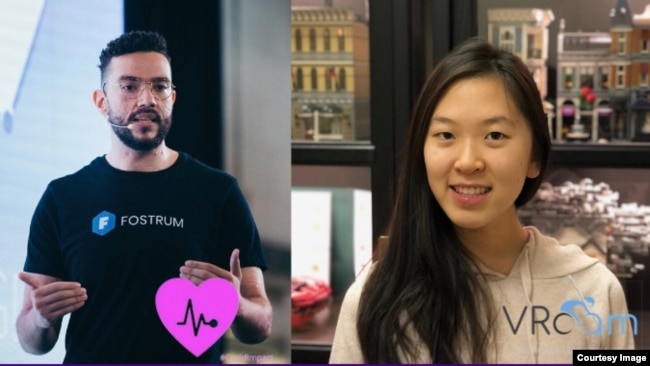
CodeTheCurveハッカソンチャレンジの優勝者3名。左から、X-COVチームのホアキン・ロペス・ヘライズ氏、COVIDImpactのリーダーであるアリ・セラグ氏、VRoamチームのクリスティ・ザイ氏。写真:CodeTheCurve/Facebook
※’hackathonについてのwinner記事は次のブログをご覧下さい。
若者のためのCodeTheCurveの ’hackathon ハッカソン’ は、新型コロナウイルスが原因の病気COVID-19に対処するためのいくつかの可能性のある新しい方法を導き出しました。このイベントの主催者には、国連、アメリカのテクノロジー企業IBM、ヨーロッパのソフトウェア企業SAPなどが名を連ねています。
優勝したチームの1つは、機械学習と画像技術を使って胸部のレントゲンを調べ、最も重篤なCOVID-19患者を特定するシステムを作成しました。別のチームは、バーチャルリアリティを利用して、ユーザーが自宅で運動しながら世界中のさまざまな場所を探索できるアプリを開発しました。
ウェアラブル技術の研究
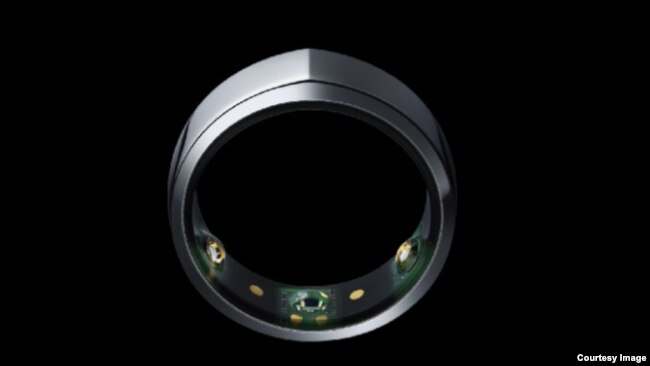 ここで見られるOuraフィットネストラッカーのようなウェアラブルデバイスは、COVID-19の感染を予測できる症状をモニターするために使用されている。(Oura)
ここで見られるOuraフィットネストラッカーのようなウェアラブルデバイスは、COVID-19の感染を予測できる症状をモニターするために使用されている。(Oura)
いくつかの企業が、COVID-19の初期兆候を識別するためのウェアラブルデバイスの有効性を研究しました。
アメリカのウェストバージニア大学の研究者たちは5月に、テストしたデバイスが、人々がCOVID-19の兆候を経験し始める3日前までに識別することができたと報告しています。
カリフォルニア州に拠点を置くスクリップス研究所が実施した別の研究プロジェクトでは、3万人以上のボランティアが装着したデバイスのデータを調査しました。研究者によると、初期の結果では、COVID-19の兆候はないが、まだ感染している人を識別することに成功したといいます。
’ス マート’ファイスマスク

日本のスタートアップDonut Roboticsの小野泰介CEOは、2020年6月23日に東京で行われたデモの際、c-maskとその携帯電話アプリを見せています。(REUTERS/Kim Kyung-Hoon)
日本の企業が、顔を覆っている人のコミュニケーションを改善することを目的とした”スマート”マスクを作りました。ドーナツロボティクス社はその発明を "c-mask "と呼んでいます。 これは、一般の人々が一般的に着用している他の種類のフェイスマスクの上に装着します。
マスクは柔らかいプラスチック素材でできており、マイクが内蔵されています。電源を入れると、マスクはBluetooth技術を使用してモバイルデバイスに接続します。
そして、アプリを使って、音声を文字に変換したり、電話をかけたり、声を大きくしたりするなどの操作を行うことができます。また、日本語の声を8カ国語に翻訳することも可能です。
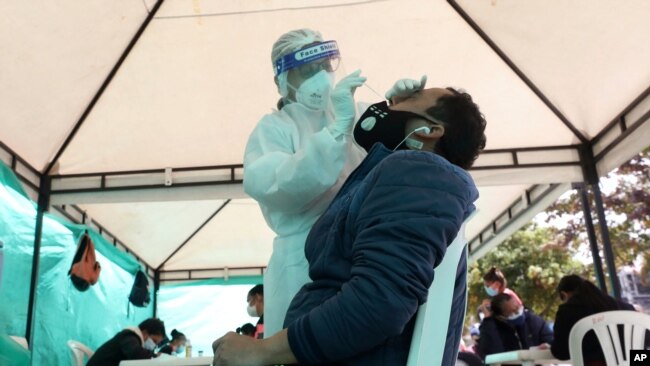
コロンビアのボゴタで市政府が無料で提供しているCOVID-19検査のために鼻腔内綿棒のサンプルを取る保健ワーカー、2020年10月16日。
機械学習によるCOVID-19の識別
研究者らは、人の咳の音からCOVID-19の症例を識別するように設計された機械学習システムの成功を報告しました。機械学習は、人間の学習に似たプロセスを経て自らを改善するコンピュータ技術といいます。
マサチューセッツ工科大学(MIT)のある研究では、身体的な兆候のない人でもCOVID-19を識別することに高い成功率を示しました。
ペンシルバニアのカーネギーメロン大学のチームは、同様の方法を用いて”COVID-19の音声ベースの検査システム”を開発しました。このシステムでは、咳の録音、母音やアルファベットなどを使って、病気の”サイン”を特定しています。
連絡先追跡アプリ
アップルとグーグルが協力して、コロナウイルスに感染した人の連絡先を追跡する携帯電話ツールを発売しました。この技術は、米国の州や数カ国が開発したアプリの基礎となり、連絡先追跡を行います。
このシステムは、Bluetoothの無線技術を使って動作し、近くにある機器同士が情報を交換して記録を作成することができます。デバイスのユーザーがウイルスに感染し、その情報を共有することに同意した場合、その記録は、他の人にも感染した可能性があることを知らせるために使用されます。
CodeTheCurve hackathon challenge
Organised in partnership with IBM and SAP, the CodeTheCurve Hackathon calls young developers and innovators to use their digital skills, creativity and entrepreneurial spirit to join forces to inspire and develop digital solutions to current and future pandemia-challenges.
CodeTheCurve is organized around three main themes:
- Ensure continued learning
- Data management and information
- The present and the future: societal and health issues
IBMおよびSAPとのパートナーシップで開催されるCodeTheCurveハッカソンは、若い開発者やイノベーターに、デジタルスキル、創造性、起業家精神を駆使して、現在および将来のパンデミアの課題に対するデジタルソリューションを刺激し、開発するために力を合わせることを呼びかけています。
CodeTheCurveは主に3つのテーマで構成されています。
-継続的な学習を保証する
-データ管理と情報
-現在と未来:社会問題と健康問題
CodeTheCurve Hackathon - Teaser
4月6日に募集を開始し、4月15日に締め切り、4月20日にハッカソンの入選40チームを発表。4月22日、23日にオンライン学習、4月24日、25日、26日にバーチャルハッカソン活動が行われ、4月30日頃に入賞チームが発表されました。
What’s CodeTheCurve?
The UNESCO CodeTheCurve global virtual hackathon is designed to enable students, educators, teachers, and the research community to build tech skills, entrepreneurial spirit, and professional competencies with a lens on digital creativity and cooperation to mobilize the world.
CodeTheCurve aims to inspire youth with new skills in a virtual, immersive environment in collaboration with other students, experts, and mentors, while creating deployable solutions and digital prototypes prepared by citizen developers, data scientists, and innovators with youth at the center. The CodeTheCurve learning and hackathon journey will be practical, hands-on, and a ton of virtual fun.
UNESCO CodeTheCurveグローバルバーチャルハッカソンは、学生、教育者、教師、研究コミュニティが、世界を動員するためのデジタル創造性と協力についてのレンズを持ち、技術的スキル、起業家精神、専門的能力を構築できるように設計されています。
CodeTheCurveは、他の学生、専門家、メンターと協力しながら、仮想的で没入型の環境で、若者に新しいスキルを身につけさせることを目的としており、若者を中心に、市民開発者、データ科学者、イノベーターが作成した展開可能なソリューションやデジタルプロトタイプを作成します。CodeTheCurveの学習とハッカソンの旅は、実践的で、実践的で、仮想的な楽しみがたくさんあります。
Who are the participants?
Anyone is invited to gather a crew of developers, data scientists, and friends from other fields (educators, teachers, and researchers), pull together a gender-inclusive group with no more than six participants, and make sure there’s at least one person under the age of 25 in your team (min. age 16). All teams must have at least one female and one male.
The collaborators from CodeTheCurve will select 40 teams to participate in the immersive learning and hackathon journey.
If a team does not get selected in the top 40, for many there will still be the opportunity to showcase their skills and perhaps get engaged in one of the 40 selected teams. More information on that will be shared later on.
To participate in a hackathon there are different profiles needed: the four Hs of a hackathon: It takes hackers (developers and data scientists), hustlers (program and project managers), hipsters (creative designers and marketers), and humanitarians (industry experts).
開発者、データサイエンティスト、他分野の友人(教育者、教師、研究者)からなるクルーを集め、男女を含めたグループを6人以下でまとめ、チームに25歳以下の人が少なくとも1人いることを確認してください(最低16歳)。すべてのチームには、女性と男性が少なくとも1人いなければなりません。
CodeTheCurveの協力者は、没入型学習とハッカソンの旅に参加する40チームを選出します。
チームが上位40チームに選ばれなかったとしても、多くの人にとっては、自分のスキルを披露し、選ばれた40チームのうちの1つに参加する機会があるかもしれません。これについての詳細は後ほどご紹介します。
ハッカソンに参加するためには、ハッカソンの4つのHsと呼ばれる異なるプロフィールが必要です。ハッカー(開発者やデータサイエンティスト)、ハスラー(プログラムやプロジェクトマネージャー)、ヒップスター(クリエイティブなデザイナーやマーケッター)、そしてヒューマニタリアン(業界の専門家)です。
Skills required
Participating teams should have at least one developer and/or one person with basic data science skills. Programming skills can include Python, Java, HTML, and/or the ability to use App Inventor or Power Apps — along with the other technical skills that you individually bring to the team. And at least one member of the team must have basic Linux and Jupyter Notebook experience.
Thanks to the partners, participants will receive free access to IBM LinuxONE Community Cloud, which will provide participants with open access to an enterprise-grade Linux environment for your development needs — innovation powered by open source technology.
参加するチームには、少なくとも1人の開発者および/または基本的なデータサイエンスのスキルを持つ人が必要です。プログラミングスキルには、Python、Java、HTML、および/またはApp InventorやPower Appsを使用できる能力が含まれます。また、チームのメンバーのうち少なくとも1人は、LinuxとJupyter Notebookの基本的な経験を持っている必要があります。
パートナーの皆様のおかげで、参加者の皆様にはIBM LinuxONE Community Cloudへの無料アクセスが提供され、開発ニーズに合わせたエンタープライズグレードのLinux環境、つまりオープンソース技術を活用したイノベーションへのオープンアクセスが提供されます。
New Technologies Created in 2020 to Fight COVID-19
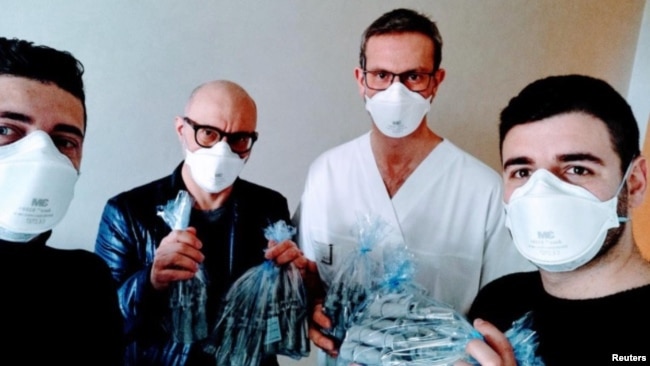 Staff members of the Italian start-up Isinnova show valves produced with a 3D printer for hospitals near the northern Italian city of Brescia, in Chiari Italy, on March 15, 2020. (CRISTIAN FRACASSI/Handout via REUTERS)
Staff members of the Italian start-up Isinnova show valves produced with a 3D printer for hospitals near the northern Italian city of Brescia, in Chiari Italy, on March 15, 2020. (CRISTIAN FRACASSI/Handout via REUTERS)
The COVID-19 pandemic affected many industries across the world in 2020. Many companies faced severe economic difficulties related to the worldwide spread of the new coronavirus. But, some were able to develop new technologies to help fight the disease in an effort to improve people’s lives.
3D printed oxygen valves
One of the first companies we reported on related to the pandemic developed a 3D printer to quickly produce oxygen valves to treat COVID-19 patients.
The new Italian company Isinnova found a way to use its 3D printing equipment to copy the medical devices. Valves are used to connect oxygen to patients suffering from breathing problems. The company produced the life-saving equipment for free after it learned many Italian hospitals faced a serious shortage of valves.
‘Hackathon’ solutions
The CodeTheCurve ‘hackathon’ for young people led to several possible new ways to deal with COVID-19, the disease caused by the new coronavirus. The event’s organizers included the United Nations, American technology company IBM and European software business SAP.
One of the winning teams created a system that uses machine learning and picture technology to examine chest X-rays to identify the most severe COVID-19 patients. Another team developed an app that uses virtual reality to let users explore different places around the world while exercising from home.
Wearable technology research
Several companies studied the effectiveness of wearable devices to identify early signs of COVID-19.
Researchers at America’s West Virginia University reported in May a device they tested was able to identify COVID-19 signs up to three days before people started to experience them.
Another research project, carried out by the California-based Scripps Research Institute, examined data from devices worn by more than 30,000 volunteers. Researchers said their early results showed the devices could successfully identify people who had no signs of COVID-19 but were still infectious.
‘Smart’ face mask
A Japanese company created a “smart” mask that aims to improve communication for people wearing face coverings. Donut Robotics calls its invention the “c-mask.” It is meant to fit over other kinds of face masks commonly worn by the public.
The mask is made of soft plastic material and contains a built-in microphone. When it is turned on, the mask uses Bluetooth technology to connect to a mobile device.
An app then helps users perform several actions, including turning speech into written text, completing telephone calls and making the user’s voice louder. The device can also translate a person’s voice from Japanese into eight other languages.
